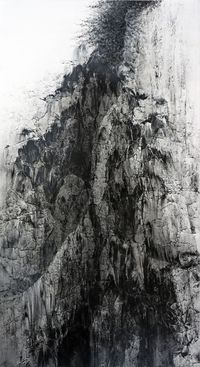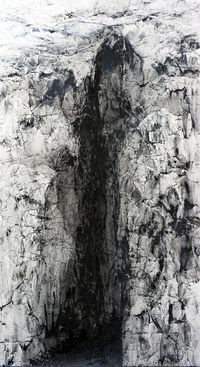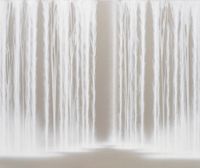Japanese-born painter Hiroshi Senju combines a minimalist visual language rooted in Abstract Expressionism with ancient painting techniques unique to Japan. The New York-based artist combines pigments derived from natural materials such as minerals, seashells and coral in a medium of animal-hide glue, and then applies this paint to Japanese mulberry paper. He is noted worldwide for his sublime waterfall and cliff images, often monumental in scale, many of which are featured in prominent public spaces.
Read MoreHiroshi Senju was the first Asian artist to receive an Honorable Mention Award at the Venice Biennale (1995) and has participated in exhibitions around the world, including the Beauty Project at the London Museum of Contemporary Art in 1996; The New Way of Tea, curated by Alexandra Munroe, at the Japan Society in New York in 2002; and Paintings on Fusuma, at the Tokyo National Museum in 2003. Also in 2003, Mr. Senju completed seventy-seven murals at the Annex of Daitokuji-Jyukoin, a prominent Zen Buddhist temple in Japan. In 2004, he was the art director for the new Haneda Airport Terminal in Tokyo, where he completed one of his largest installations. The Benesse Art Site of Naoshima Island, designed by Tadao Ando, also houses two large-scale installations. Senju’s work is in the Museum of Contemporary Art in Los Angeles; The Museum of Modern Art, Toyama, Japan; Yamatane Museum of Art in Tokyo; The Tokyo National University of Fine Arts and Music; and the Kushiro Art Museum, Hokkaido, Japan. The Hiroshi Senju Museum, designed by Ryue Nishizawa, opened in October 2011 in Karuizawa, Japan.
In 2009, noted Italian fine-art publisher Skira released the monograph Hirsohi Senju, a richly illustrated compendium of the artist’s work since the 1980s.
Text courtesy Sundaram Tagore Gallery.








